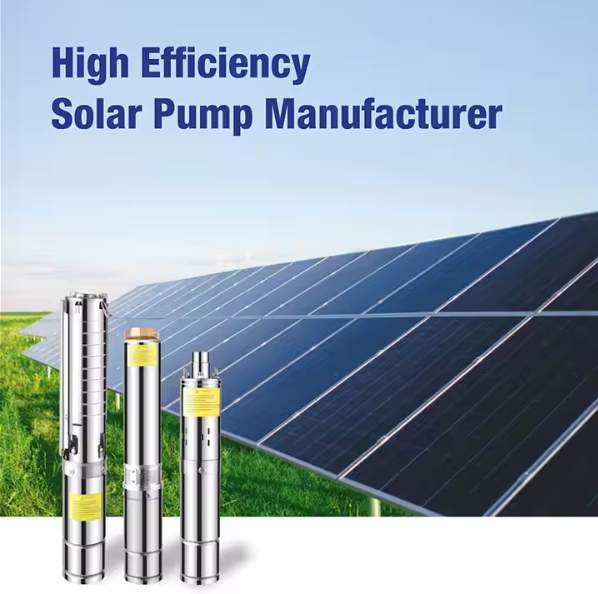How can solar water pumps be used for agricultural irrigation?
by
How can solar water pumps be used for agricultural irrigation?
Farmers worldwide face rising energy costs and water scarcity. Could solar-powered water pumps be the sustainable solution they need?
Solar water pumps harness solar energy to lift and distribute water for crops, offering a cost-effective and eco-friendly alternative to diesel or electric pumps, especially in off-grid farming areas.
Transitioning to solar-powered irrigation can seem daunting, but with the right knowledge, farmers can unlock significant benefits. Let’s explore how solar water pumps can revolutionize agricultural irrigation.
Can a drip or sprinkler irrigation system be supported using solar water pumps?
Many farmers worry about compatibility—will solar pumps work efficiently with modern irrigation methods?
Yes! Solar water pumps seamlessly support drip and sprinkler systems. Their adjustable flow rates and pressure ensure precise water delivery, reducing waste while keeping energy costs near zero.
Key Considerations When Pairing Solar Pumps with Irrigation Systems
System Compatibility
- Drip Irrigation: Ideal for solar pumps due to low pressure requirements (10–20 psi). Works efficiently with DC pumps.
- Sprinklers: Higher pressure demands (30–50 psi) may require AC solar pumps with inverters or larger solar arrays.
Components Needed
| Component | Purpose | Notes |
|---|---|---|
| Solar Panels | Power generation | Size depends on pump horsepower |
| Pump Controller | Regulates voltage/current | Protects pump from dry running |
| Water Storage | Stabilizes supply | Critical for cloudy days |
Real-World Example
A vineyard in California switched from diesel to solar pumps for drip irrigation. Result? 40% lower operating costs and a 15% increase in grape yield due to consistent watering.
How can farms choose the right solar water pump based on the area and crop type?
Selecting the wrong pump can lead to water waste or crop failure—how do farmers navigate these choices?
Match the pump to water demand: calculate daily crop water needs (in liters) and total dynamic head (lift + friction loss). Smaller farms may use 0.5–2 HP pumps, while orchards require 5+ HP submersible models.
Step-by-Step Selection Guide
1. Assess Water Requirements
- Crop Type:
- Leafy greens: 4–6 mm/day
- Fruit trees: 6–8 mm/day
- Soil Type: Sandy soils need frequent, low-volume irrigation.
2. Determine Pump Type
| Scenario | Recommended Pump | Example Brands |
|---|---|---|
| Shallow wells (<10m) | Surface centrifugal | Lorentz PSk2 |
| Deep wells (>30m) | Submersible | Grundfos SQFlex |
| Large farms | AC solar pump + inverter | Shakti Pumps SolarStar |
3. Solar Array Sizing
A 1 HP pump typically needs 1.5 kW of solar panels. Always add a 20% buffer for cloudy conditions.
Pro Tip: Use PVsyst software to simulate solar energy output for your location.
Will solar water pumps perform reliably during peak agricultural seasons (such as summer)?
Farmers fear pump failures when crops need water most—can solar systems handle scorching summer demands?
Solar pumps thrive in summer! PV panels generate surplus energy in sunny conditions, and with proper storage or hybrid backup (battery/grid), they ensure uninterrupted water supply.
Ensuring Reliability: Solutions for Peak Seasons
1. Oversize the Solar Array
- Summer sun increases output, but dust accumulation can reduce efficiency by 15%. Solution: Install 10–15% more panels than calculated.
2. Water Storage Strategies
- Daytime Storage: Pump extra water to overhead tanks during peak sunlight for nighttime use.
- Battery Backup: Costly but viable for critical crops (e.g., 48V lithium batteries for 5 HP pumps).
3. Hybrid Systems
| Backup Type | Pros | Cons |
|---|---|---|
| Diesel Generator | Instant power | Noise/fuel costs |
| Grid Connection | Stable supply | Requires infrastructure |
Case Study: A maize farm in Kenya uses a solar-diesel hybrid. Solar covers 80% of needs; diesel kicks in during rare cloudy stretches.
Conclusion
Solar water pumps cut costs, boost sustainability, and adapt to diverse irrigation needs—empowering farmers to grow more with less. ```
Popular Posts
You may also be interested in:




